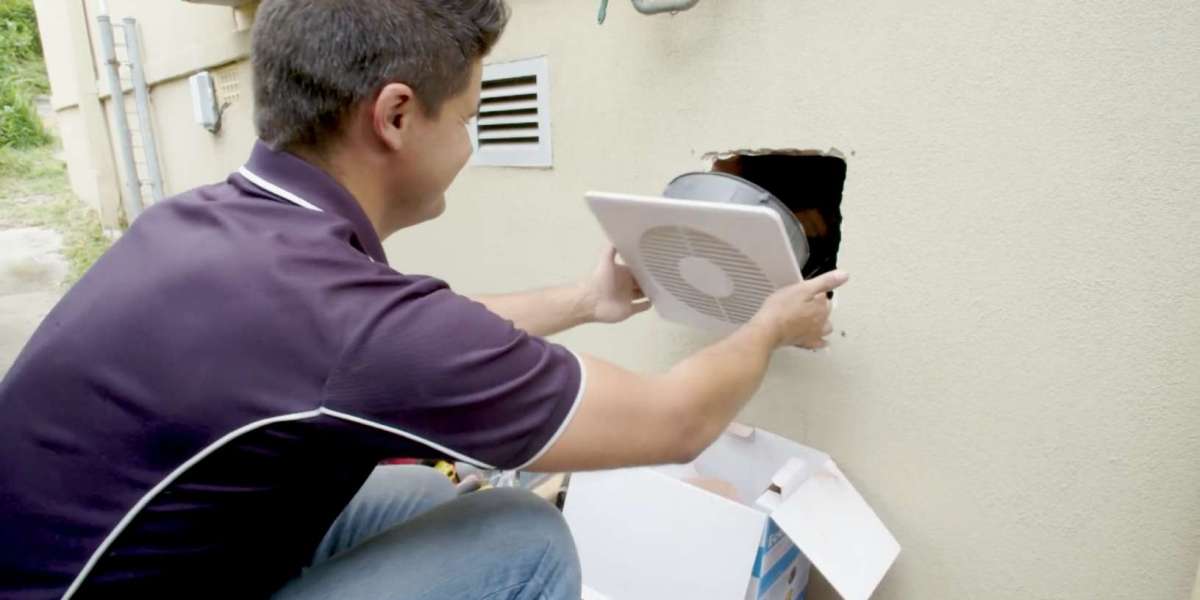As the world shifts towards more sustainable and energy-efficient building practices, the future of commercial ventilation is evolving. Traditionally, businesses and property owners have relied on mechanical ventilation systems to regulate air quality and temperature within commercial spaces. However, the growing demand for greener, cost-effective, and low-maintenance solutions is paving the way for natural home solutions to take center stage. These solutions harness the power of nature—through wind, sunlight, and plant life—to create healthier, more efficient environments for both workers and customers.
In this article, we explore why the future of commercial ventilation is heading toward natural home solutions and how these strategies are set to revolutionize the industry.
1. Sustainability at the Core
The global focus on sustainability and reducing carbon footprints is one of the most compelling reasons why natural home solutions are becoming integral to the future of commercial ventilation. Many mechanical systems, while effective, consume large amounts of energy, driving up both operating costs and environmental impact.
Why Natural Solutions are More Sustainable
Energy Efficiency: Natural ventilation systems, such as cross-ventilation, passive solar design, and green roofs, operate without electricity or rely on minimal energy to function. This significantly reduces the carbon footprint of a commercial building and lowers energy costs over time.
Renewable Resources: Natural solutions use renewable resources—wind, sunlight, and plant life—rather than relying on finite fossil fuels. For example, wind towers and roof vents harness the natural movement of air to regulate temperature, while solar design captures free energy from the sun to warm or cool spaces.
Lower Maintenance Needs: Mechanical systems often require regular upkeep, including filter replacements, duct cleaning, and motor servicing. In contrast, natural ventilation methods require little to no maintenance, making them both more sustainable and cost-effective in the long run.
As businesses seek to align with stricter environmental regulations and meet the growing demand for green buildings, natural home solutions provide an effective and sustainable alternative to traditional mechanical ventilation systems.
2. Healthier Indoor Environments
Indoor air quality has become a primary concern for businesses, especially in light of the COVID-19 pandemic, which highlighted the importance of proper ventilation in preventing the spread of airborne diseases. Poor ventilation can lead to the accumulation of harmful pollutants, allergens, and carbon dioxide, negatively affecting the health and productivity of occupants.
How Natural Ventilation Improves Air Quality
Fresh Air Circulation: Natural ventilation methods, like cross-ventilation and stack ventilation, facilitate continuous air exchange, allowing fresh outdoor air to replace stale indoor air. This reduces the concentration of pollutants and ensures healthier, more breathable environments.
Air-Purifying Plants: Incorporating plants into commercial spaces can further improve air quality by absorbing carbon dioxide and releasing oxygen. Plants like peace lilies, spider plants, and bamboo palms act as natural air purifiers, removing toxins like formaldehyde and benzene.
Humidity Regulation: Natural systems also help control humidity, which is critical in preventing mold growth and ensuring comfort. Green roofs and living walls can absorb moisture and regulate indoor humidity levels, improving both air quality and occupant well-being.
With a growing emphasis on creating healthier workspaces, natural home solutions provide a perfect match for businesses looking to enhance indoor air quality, boost employee productivity, and create a comfortable environment for clients and staff alike.
3. Cost-Effectiveness and Long-Term Savings
While the initial investment in natural ventilation features may be higher due to the need for specific design elements, the long-term savings are undeniable. Traditional mechanical systems often come with high installation and operational costs, as well as ongoing maintenance expenses.
Financial Benefits of Natural Solutions
Lower Energy Bills: Natural ventilation reduces the need for air conditioning and mechanical heating, resulting in lower utility costs. By using the natural flow of air and sunlight, businesses can achieve a comfortable indoor climate without the high energy consumption associated with traditional HVAC systems.
Reduced Maintenance Costs: With fewer moving parts and less reliance on complex mechanical systems, natural ventilation systems typically require far less maintenance. Businesses save on service calls, filter changes, and other regular upkeep tasks, making these solutions more cost-effective over time.
Increased Building Value: As green building practices gain momentum, properties with energy-efficient features such as natural ventilation systems are becoming more attractive to tenants and buyers. Installing natural home solutions can increase the market value of commercial properties, making them more desirable and potentially yielding higher rental rates or resale prices.
For businesses looking to minimize operating costs and maximize long-term savings, natural home solutions present an appealing financial incentive.
4. Adapting to Changing Regulations and Building Codes
As governments around the world introduce stricter environmental and energy-efficiency regulations, businesses are facing increasing pressure to comply with green building standards. Natural home solutions can help companies meet these evolving requirements while providing functional, eco-friendly alternatives to traditional mechanical systems.
Meeting Green Building Standards
LEED Certification: The Leadership in Energy and Environmental Design (LEED) certification rewards buildings that meet specific sustainability criteria. Natural ventilation systems—such as using skylights, green roofs, or passive solar design—can contribute to LEED credits, helping a building qualify for this prestigious certification.
BREEAM Certification: The Building Research Establishment Environmental Assessment Method (BREEAM) is another widely recognized green building certification that assesses the sustainability of a building. By incorporating natural ventilation and energy-efficient features, commercial buildings can increase their chances of meeting BREEAM standards.
Compliance with Local Codes: Many cities and municipalities are enacting stricter building codes to improve energy efficiency and reduce greenhouse gas emissions. By adopting natural home solutions, businesses can ensure they remain compliant with these evolving regulations, avoiding potential fines or penalties.
Natural ventilation methods not only contribute to a more sustainable and energy-efficient building but also provide an easy way for businesses to meet the regulatory requirements for eco-friendly spaces.
5. Future-Proofing Commercial Spaces
As the global trend toward sustainability continues to accelerate, natural home solutions will play a central role in shaping the future of commercial ventilation. Buildings that incorporate these strategies are well-positioned to adapt to future trends, including the shift toward smarter, more sustainable cities.
Flexibility and Scalability
Customizable Solutions: Natural ventilation systems can be tailored to fit a variety of commercial building types and sizes. Whether it's a large office building, a warehouse, or a retail store, natural home solutions can be adapted to meet specific needs and building layouts.
Smart Integration: As technology continues to advance, natural ventilation systems can be integrated with smart building technologies. Automated windows, shading devices, and roof vents can adjust according to weather conditions and indoor air quality, optimizing airflow without the need for constant human intervention.
Adaptation to Climate Change: As global climates become more unpredictable, natural ventilation systems are inherently more adaptable to changing weather conditions. With the ability to capture natural airflows and utilize passive design features, buildings using these systems are more resilient to temperature fluctuations and extreme weather.
By investing in natural home solutions, businesses can future-proof their commercial spaces, ensuring they remain energy-efficient, adaptable, and sustainable in the years to come.
Conclusion
The future of commercial ventilation is undeniably tied to natural home solutions. These innovative strategies offer a sustainable, cost-effective, and healthier alternative to traditional mechanical systems. By harnessing the power of nature—through wind, solar energy, and plant life—businesses can improve indoor air quality, reduce energy consumption, lower maintenance costs, and meet evolving environmental regulations.
As demand for sustainable buildings continues to grow, natural ventilation systems will play a central role in transforming the commercial real estate landscape. For business owners and property managers looking to create healthier, more efficient spaces, adopting natural home solutions is not just a trend—it’s the future of commercial ventilation








